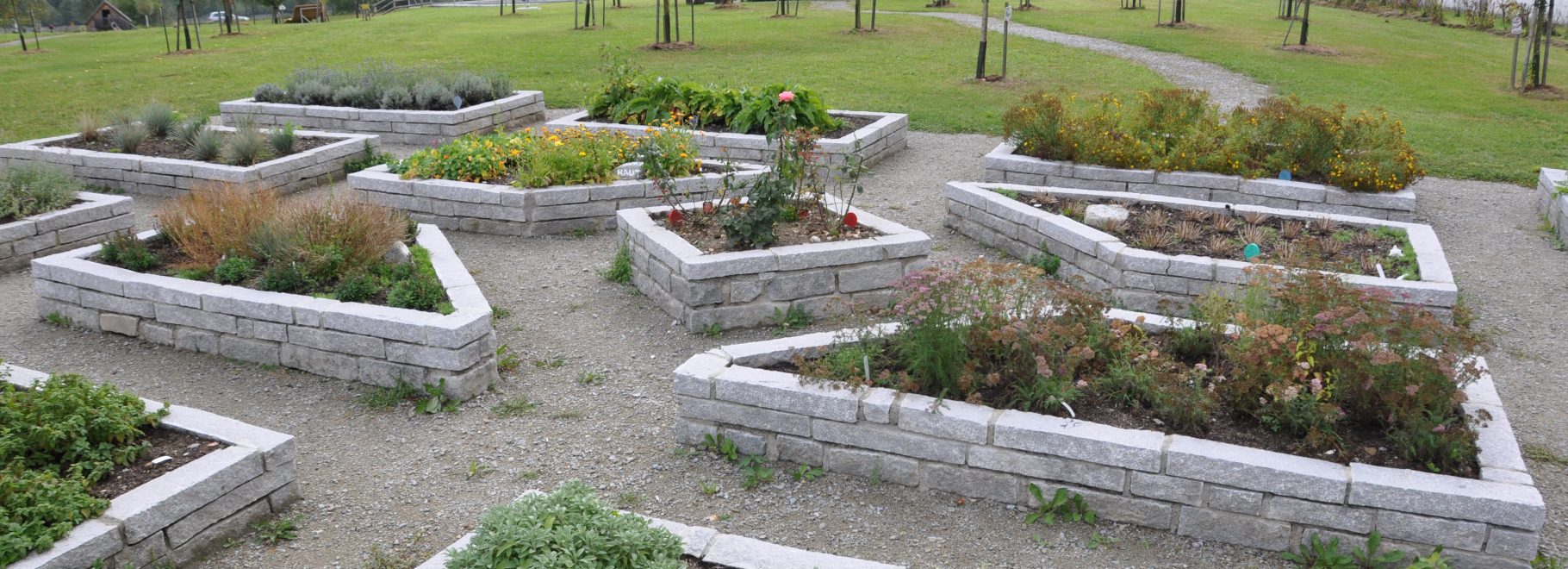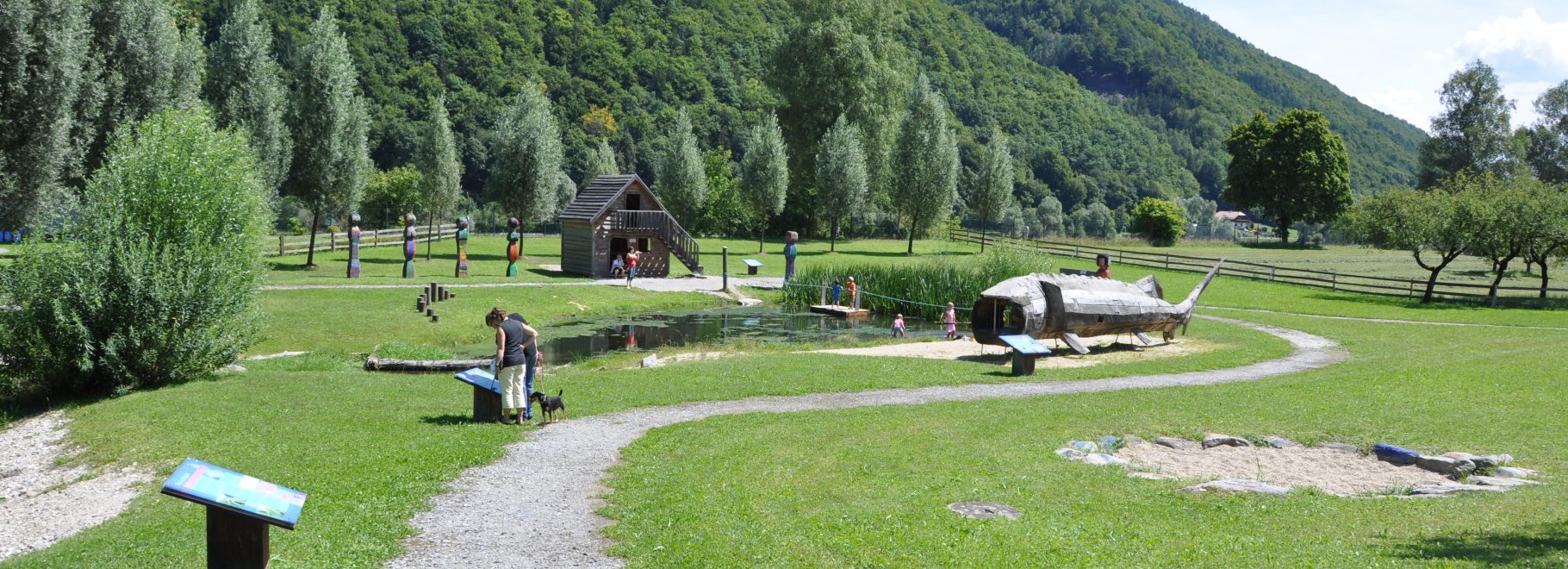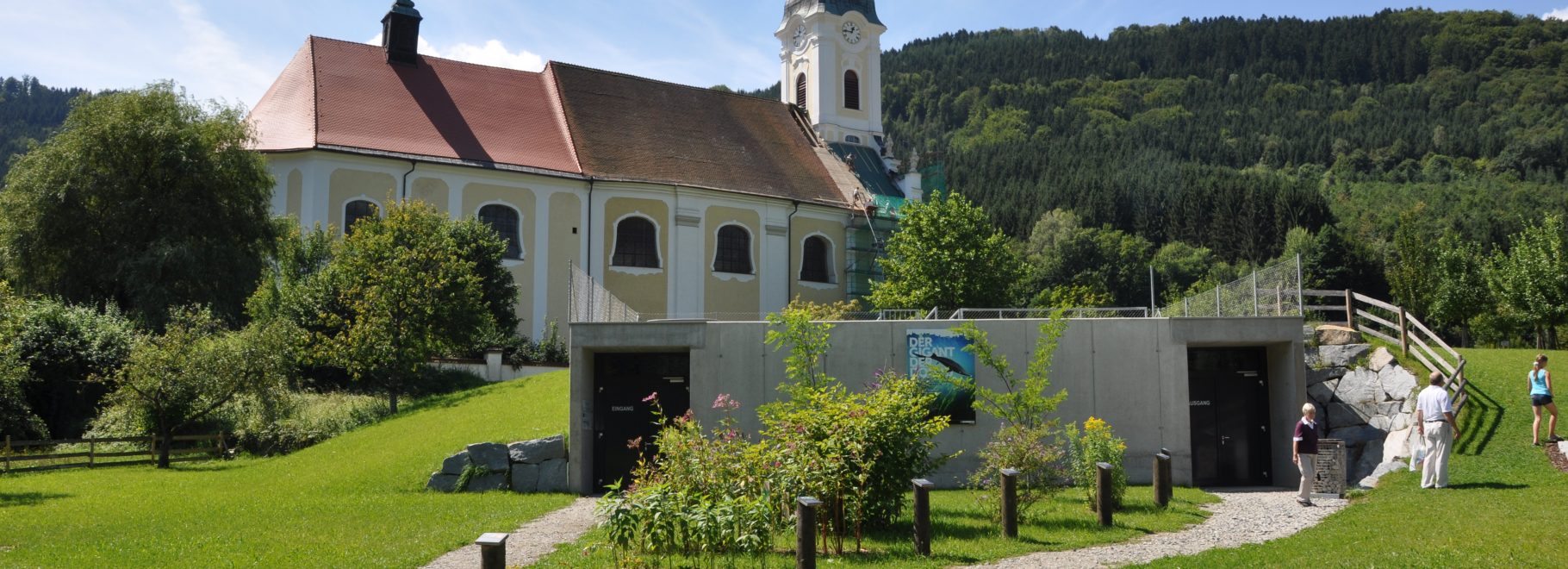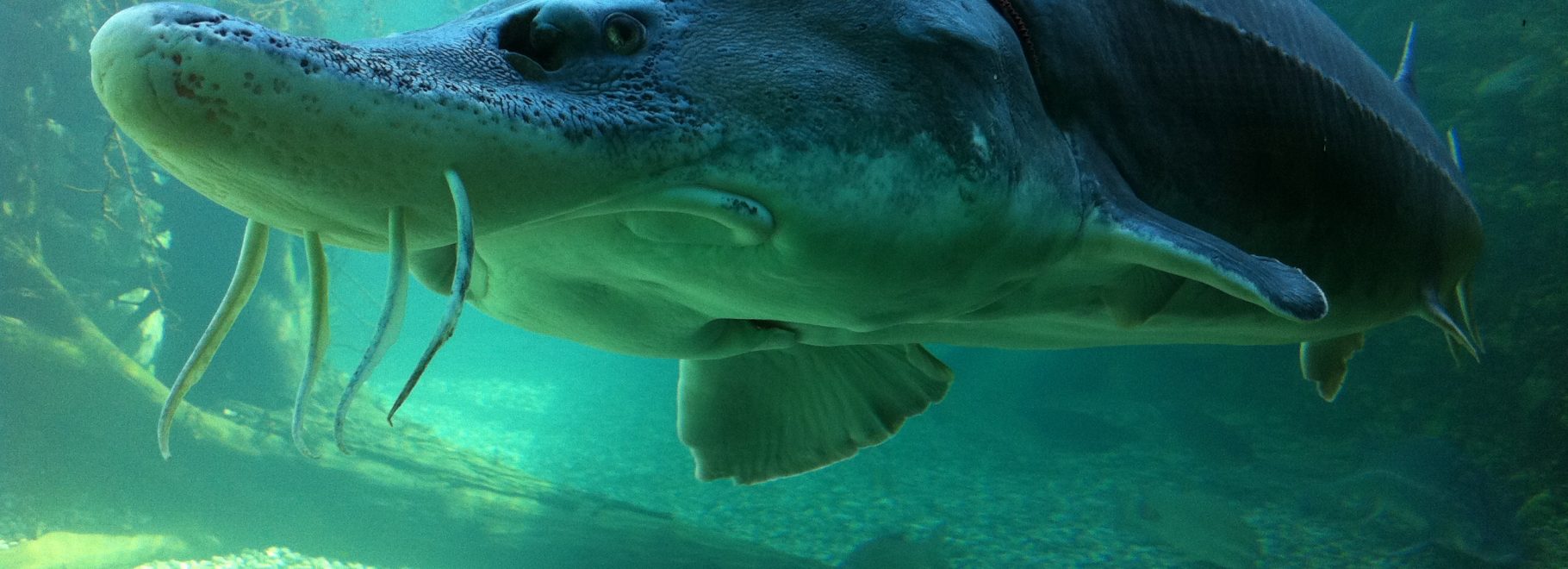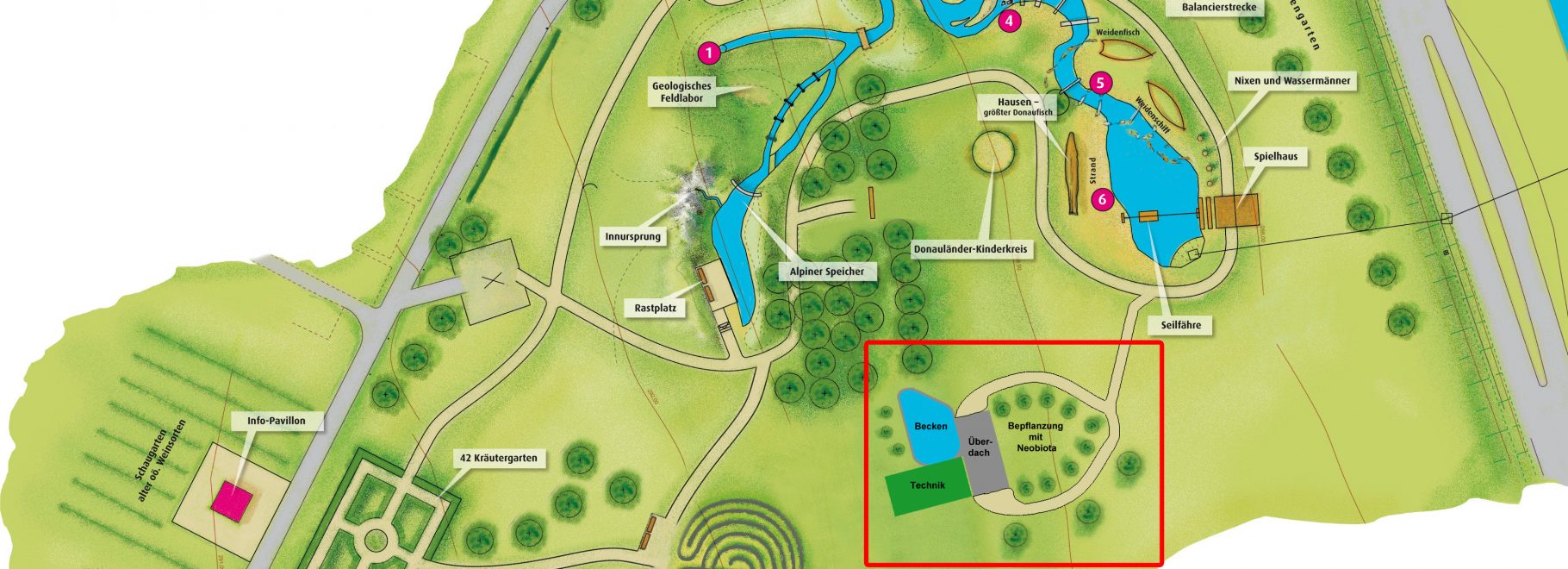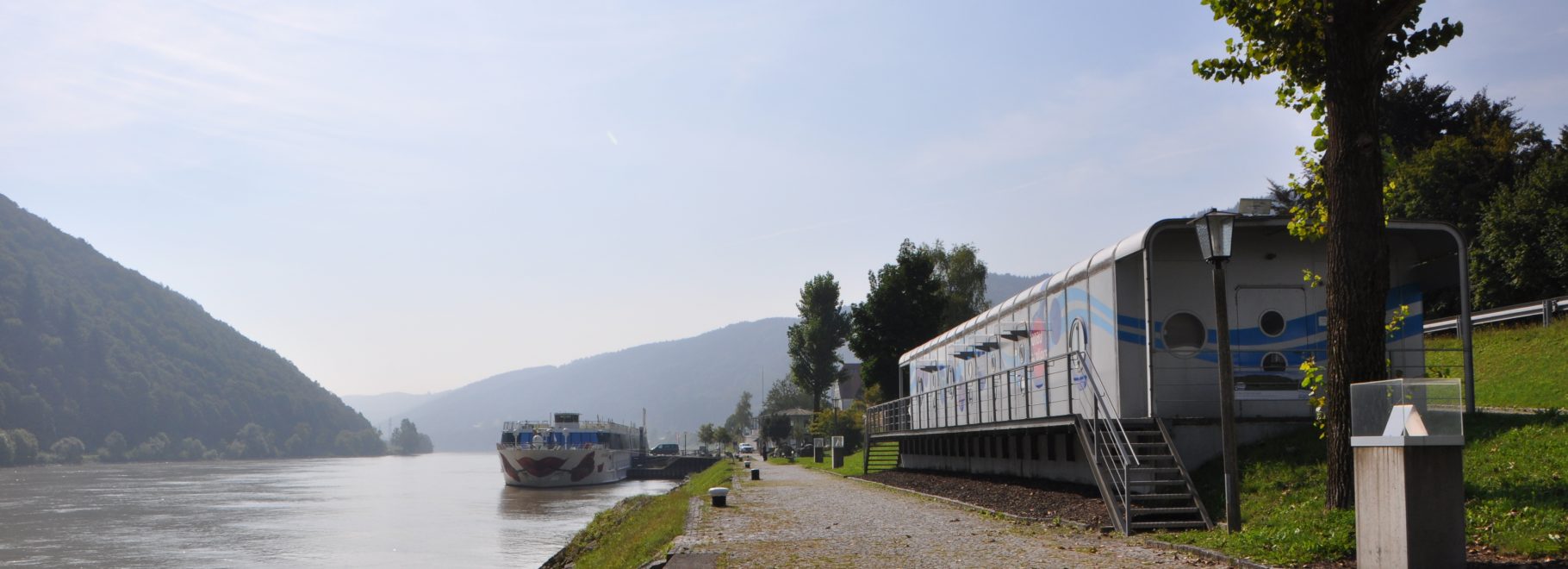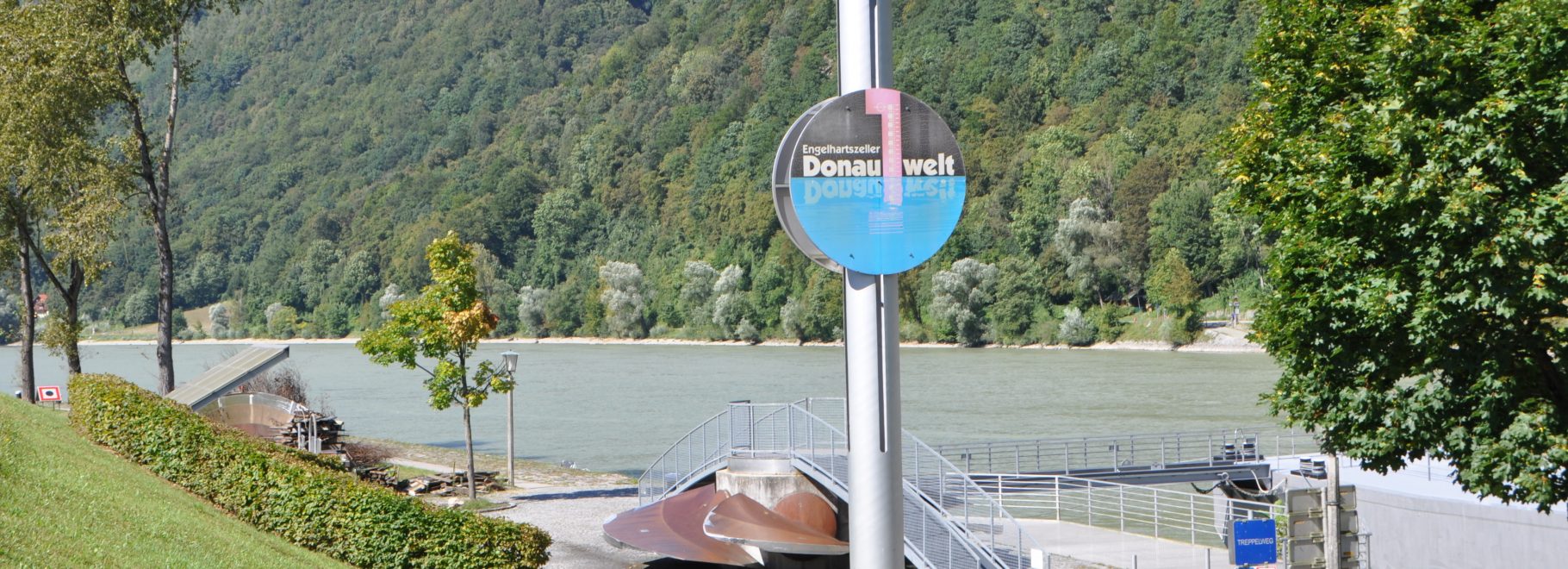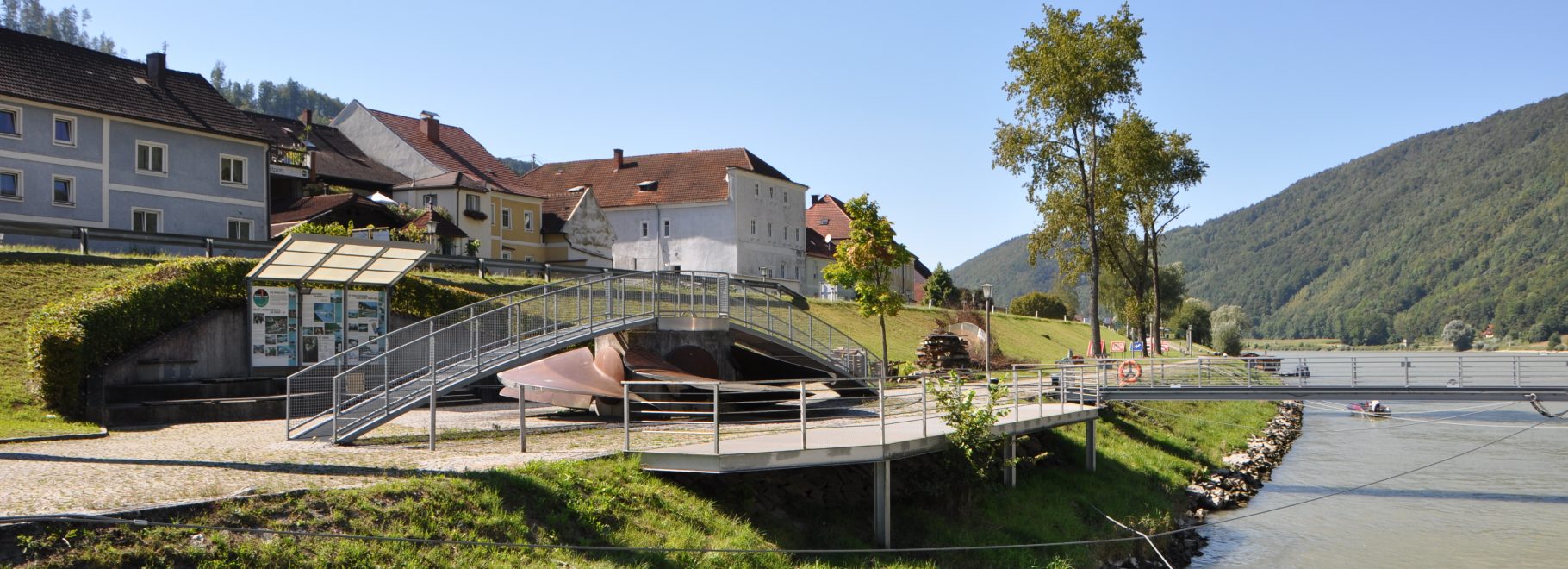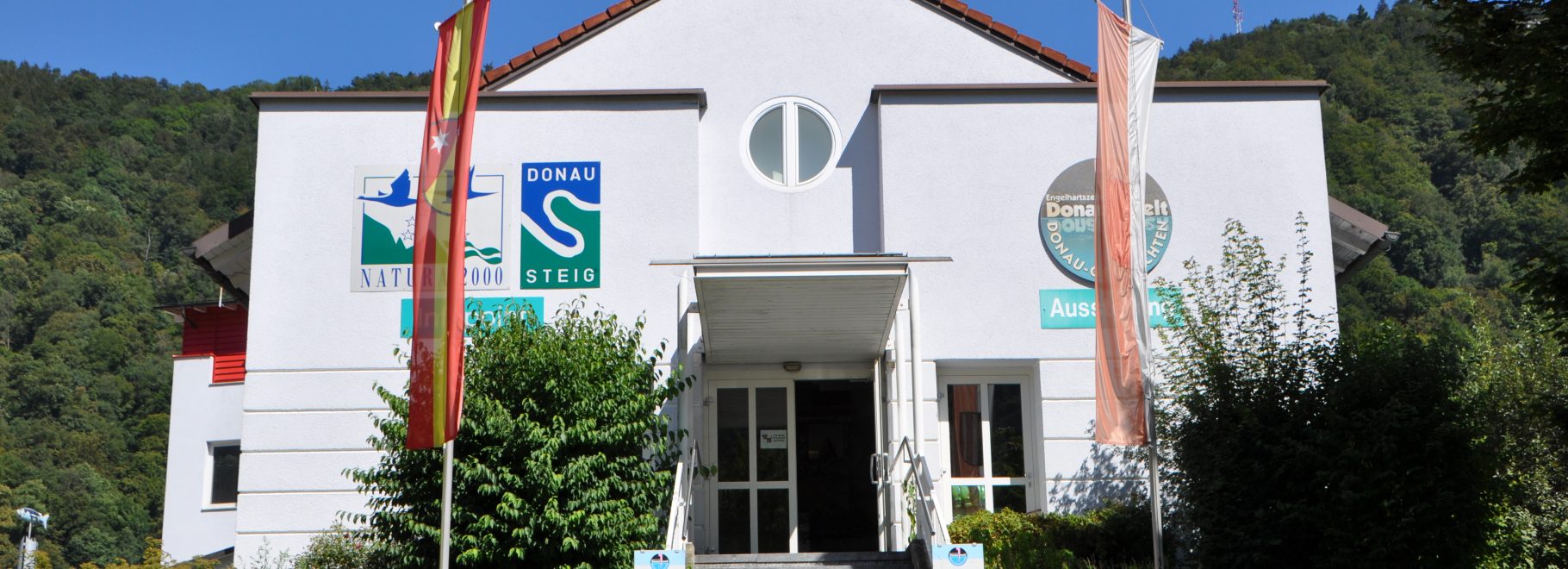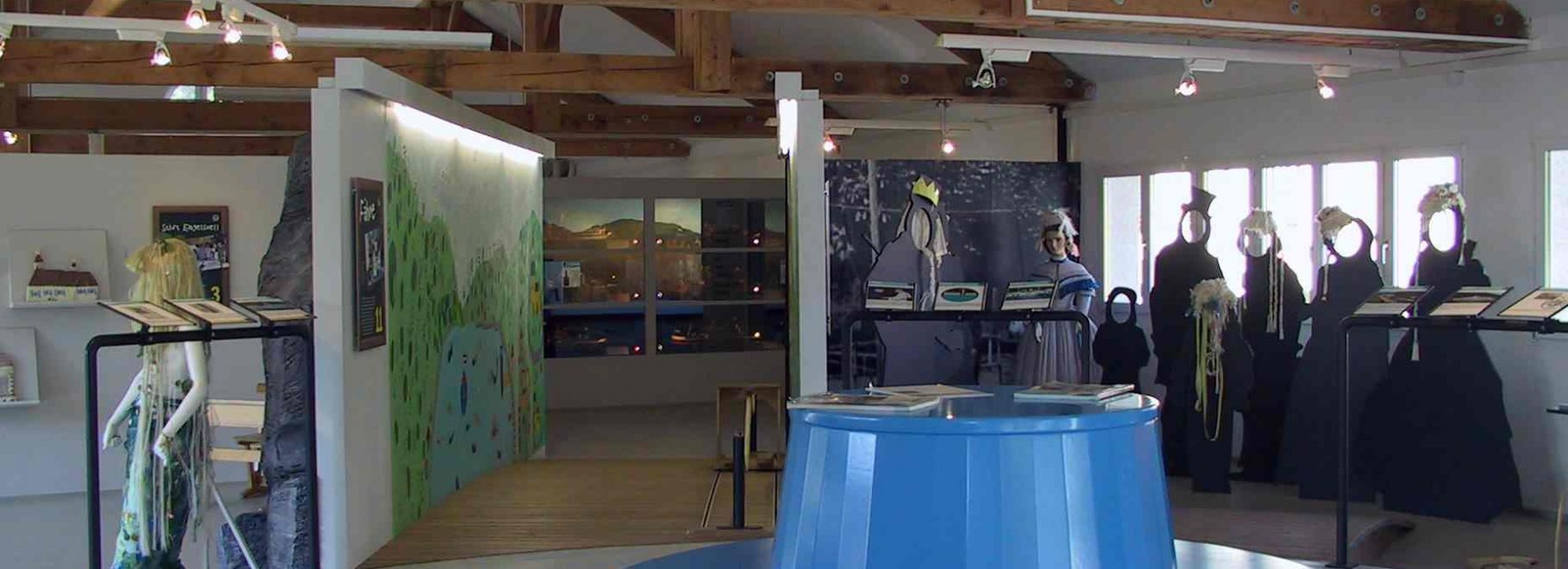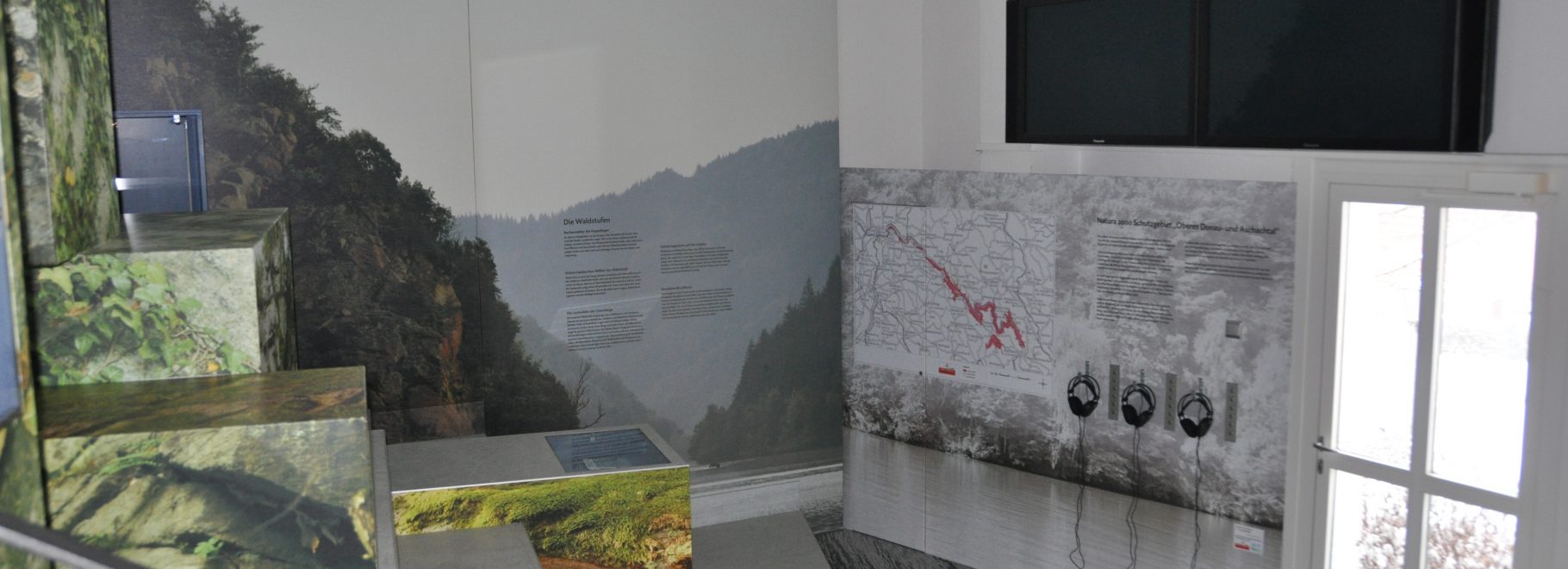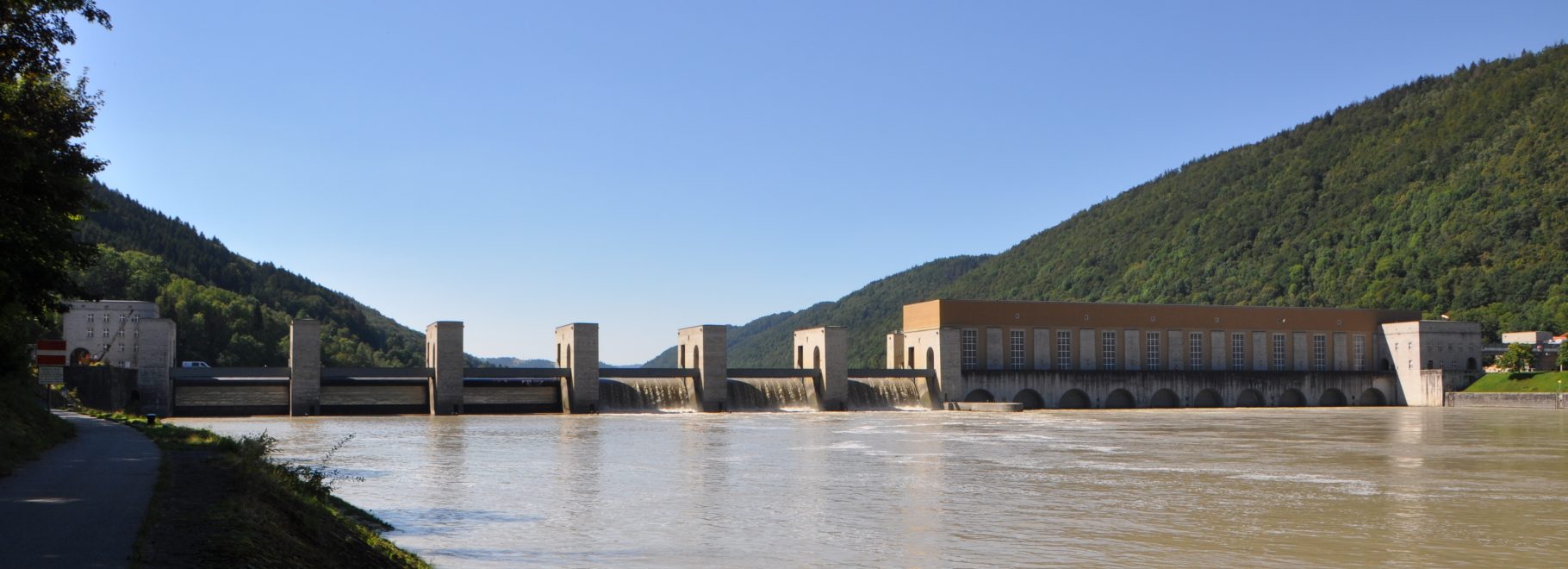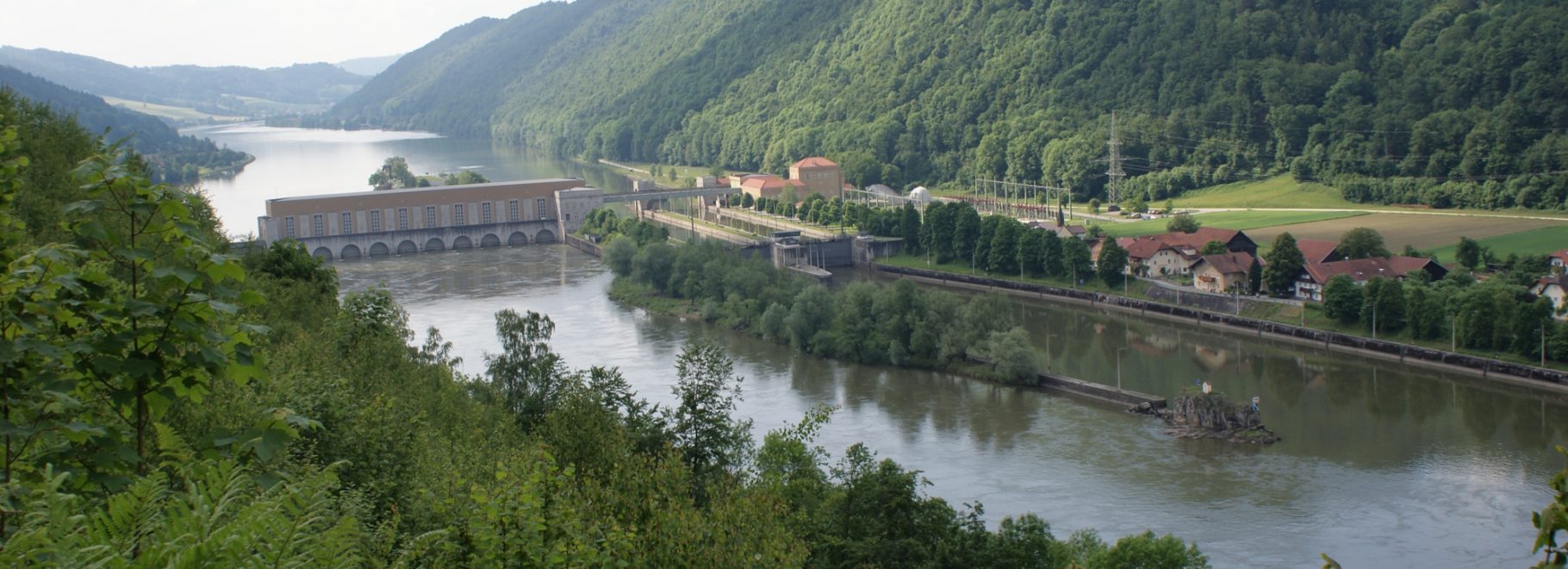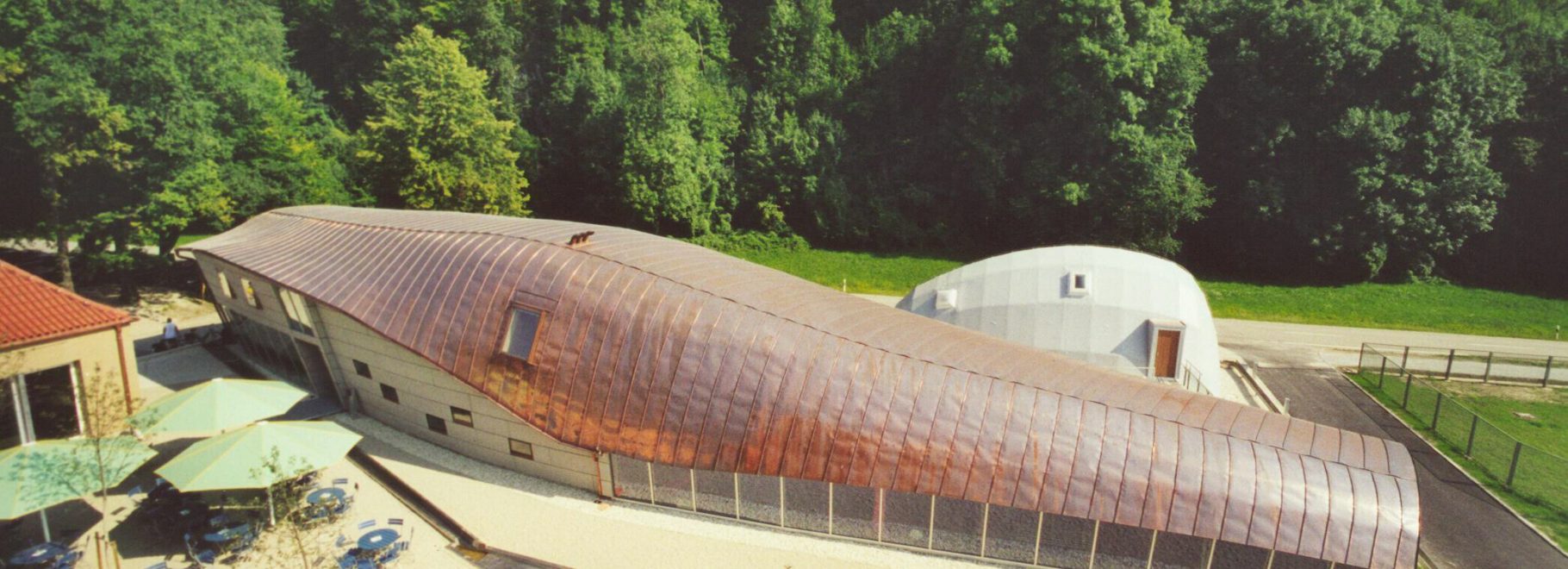Danube-World with Water Adventure, Engelhartszell, Austria
The Danube-World of Engelhartszell consists of eight stations: A-H
A) Garden of senses: shows old varieties of wine, old fruit varieties, an herb garden and a stone labyrinth. A silent place to recover next to the Trappist monastery.
B) Water-adventure Mini-Danube: an interactive open air playing area, where the Danube is relived from source to outlet in six stations. At each station visitors learn about the Danube. It is an eco-pedagogical exhibition – so many schools come for a visit. The exhibition “the aliens are coming – new animal and plant species in our homeland” with a giant-aquarium is part of the Mini-Danube. It shows how non-domestic plants and animals spread and blend amongst our domestic species and displace them. Centerpiece is a giant aquarium, where Beluga, the giant of the Danube, and Sterlet, the smallest kind of sturgeons are being shown up close. While nowadays the Beluga does not exist in the upper Danube Valley anymore, the Sterlet has survived due to being a self-reproducing species. Visitors combine activity, entertainment and education. The area is accessible for people with disabilities.
We offer guided tours in German and English language. Especially guests from river cruising companies are impressed by the nature of the Danube valley. Our main goals are to make people aware of our natural resources,
to protect life in and at the river Danube and to raise the visitor`s awareness for the reasonable use of water.
C) In the “Donau-Ateliers” local artists show their creative work.
D) On the “Donau-Platz” there is a turbine of the power-plant.
E) The “Donau-Spiel” is a children`s playground with swings, slides and a climbing pyramid.
F) In the exhibition “Danube-Stories” (Donau-Geschichten) models of old steam-ships can be seen, also an original ship-cabin and creative objects about the history of Engelhartszell made by children and artists. Here is an information point of “Natura 2000”: this network is the EU contribution to the “Emerald network” of Areas of Special Conservation Interest (ASCIs) set up under the Bern Convention on the conservation of European wildlife and natural habitats. Natura 2000 is also a key contribution to the Program of Work of Protected Areas of the Convention on Biological Diversity.
G) The power plant Jochenstein belongs to Bavaria and Upper Austria. On the Austrian side there is a new exhibition about energy and water power (it opens May 2018).
H) On the German side there is the exhibition “Haus am Strom”
Museum website: www.donau-welt.at


